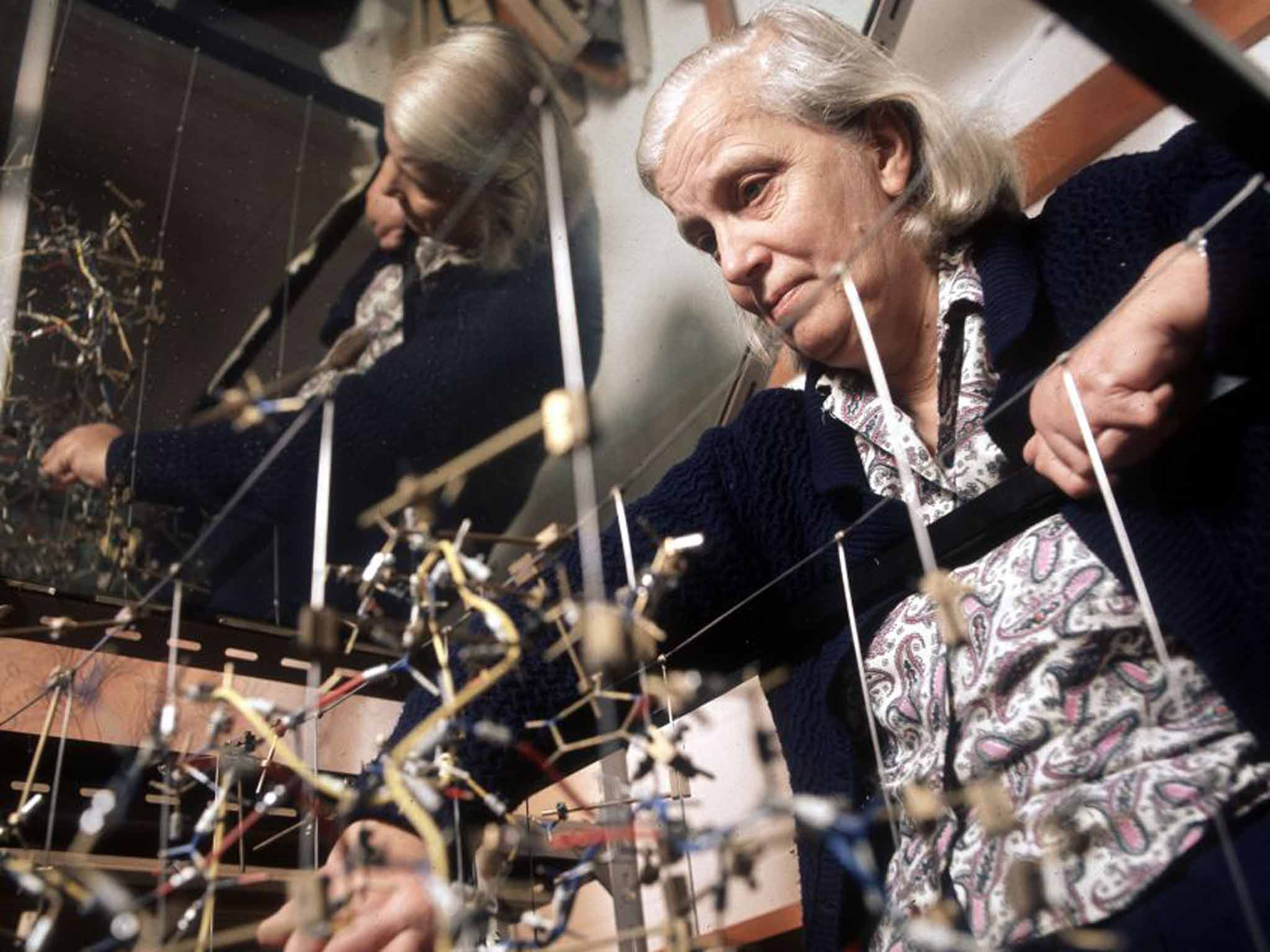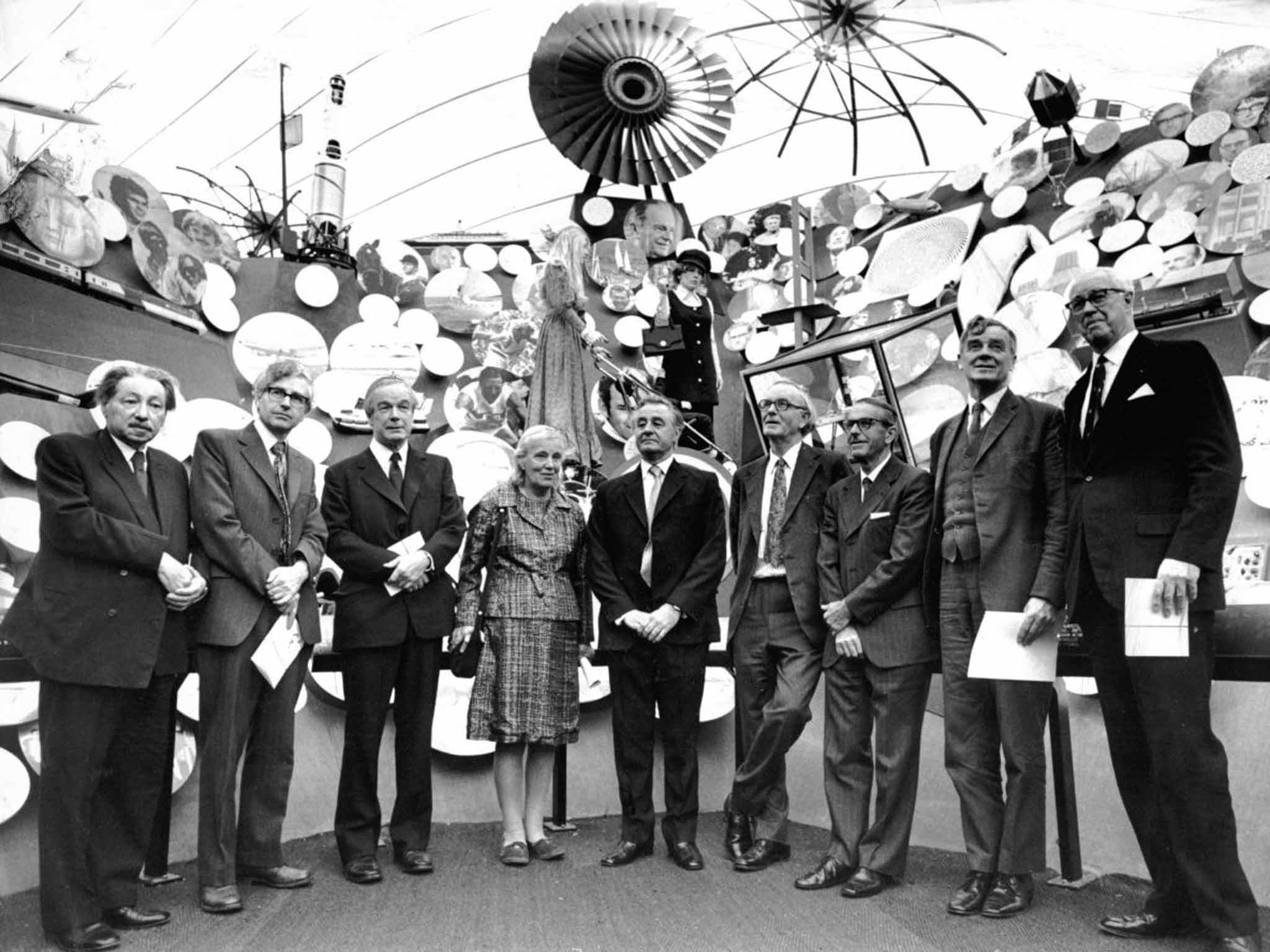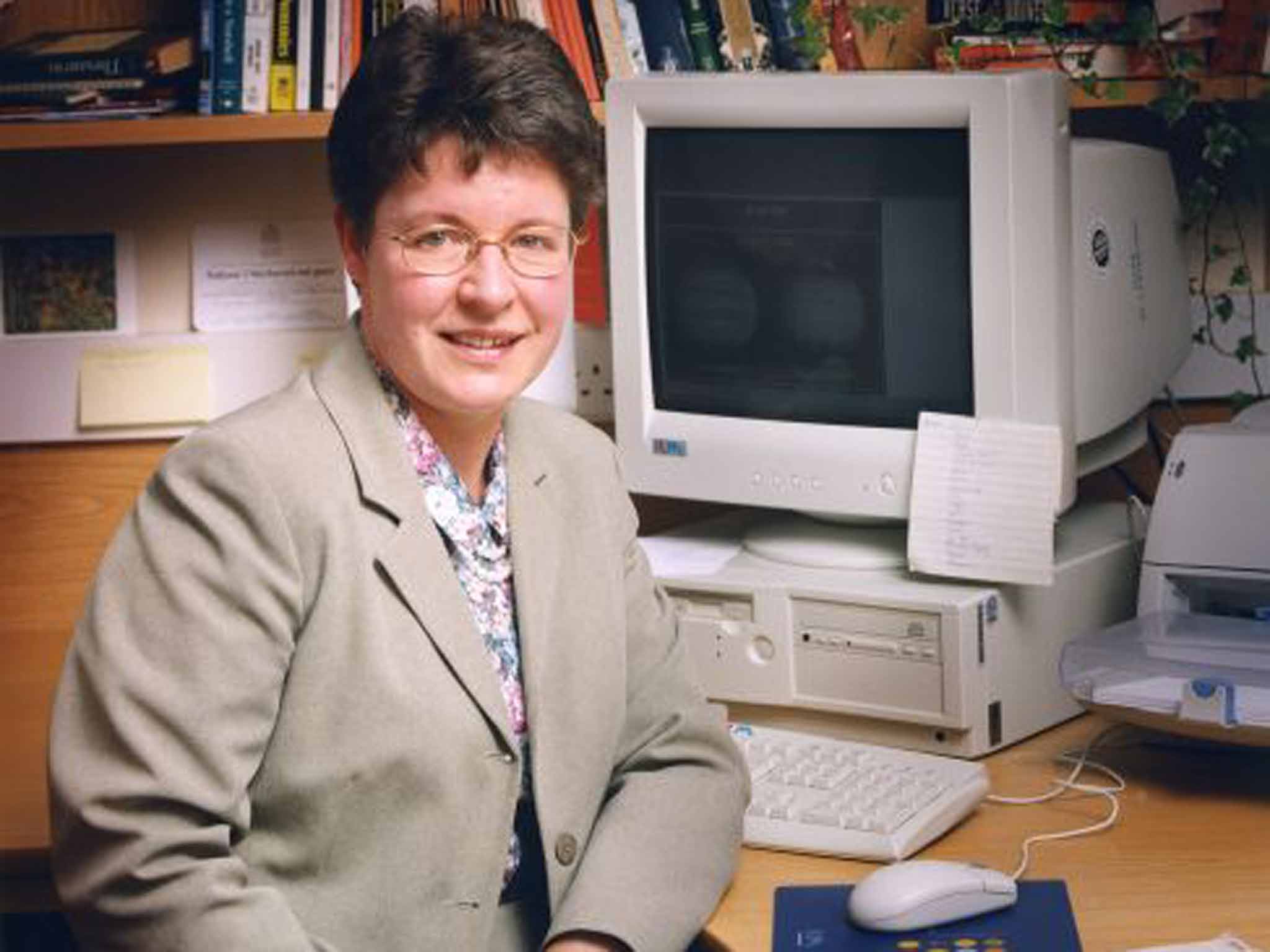How can we encourage more girls to study science?
Fifty years ago Dorothy Hodgkin was the first, and still the only, British woman scientist to win a Nobel Prize. Schools are working ever harder to attract girls to science, but do they have the right formula? Susan Watts reports

Your support helps us to tell the story
From reproductive rights to climate change to Big Tech, The Independent is on the ground when the story is developing. Whether it's investigating the financials of Elon Musk's pro-Trump PAC or producing our latest documentary, 'The A Word', which shines a light on the American women fighting for reproductive rights, we know how important it is to parse out the facts from the messaging.
At such a critical moment in US history, we need reporters on the ground. Your donation allows us to keep sending journalists to speak to both sides of the story.
The Independent is trusted by Americans across the entire political spectrum. And unlike many other quality news outlets, we choose not to lock Americans out of our reporting and analysis with paywalls. We believe quality journalism should be available to everyone, paid for by those who can afford it.
Your support makes all the difference.After the Nobel Prize ceremony in 1964, 50 years ago today, in which her work on crystallography was recognised, Dorothy Hodgkin is reported to have said that she would have preferred not to have had such a fuss made about her gender.
“The situation in which I find myself will, I very much hope, not be so uncommon in the future that it will require any comment or special treatment, as more use is made of the many gifts which women share equally with men.” Half a century later, Dorothy Hodgkin is still the only female British scientist to have won a Nobel Prize.
These days there’s a great deal of energy channelled into persuading girls to take science at school. So is the day-to-day working environment any better for women in science?
Many of the problems faced by girls and women in science were identified decades ago, along with the need for positive role models, the advantages of single-sex teaching and the benefits of flexible working patterns. Yet a look at the numbers suggests there’s still much work to be done. Efforts to raise awareness of the value of science and engineering careers have paid off. The numbers of boys and girls taking subjects such as maths, further maths, chemistry, biology and physics at A-level has increased over the past 10 years.
But attempts to boost the female percentage have been painfully slow. The biggest increases have been in chemistry (up just over 9 per cent) and maths and further maths (up nearly 8 per cent) since 1985.
Most shockingly, the percentage of females taking physics A-level has remained stuck – at just over 20 per cent – since the mid-1980s. Similarly, the figure for biology has also hovered around the 60 per cent mark. In spite of all the initiatives to shift this balance, we’ve failed.

And it matters that we find out why. If girls opt out of physics at A-level they’re shutting down whole swathes of possibilities; limiting their chances of pursuing careers in areas from engineering to the computer games industry, to renewable energy, to teaching and research.
Just as importantly, those professions and scientific subjects are losing this female voice. We can only guess at what might be missed.
I’m intrigued to know what women today would change to improve life for those coming behind. I arrive at a science park just south of Cambridge, home to a glittering array of science-based companies.
Dr Ruth McKernan is senior vice-president of Pfizer and chief scientific officer at Neusentis, one of Pfizer’s 10 research centres. Ruth and I met in the 1990s when I was at this newspaper, and she joined the science “desk” as a British Association media fellow, eager to learn about science journalism. She and I both attended girls’ schools in south London, both our dads had science/engineering backgrounds and we both went to university in London. Ruth studied biochemistry and pharmacology and I took physics. It turns out that girls are still more likely to stick with science if they have single-sex schooling and a parent as a role model.
Ruth has continued her science writing, with a moving book about her relationship with her scientist father, Billy’s Halo, in 2006. She’s most alive when talking about science, but is thoughtful on why it matters that we examine the reasons behind the poor representation of women, especially at leadership level. “It’s about the moral issue of women’s place in society. Why, if you employ 50 per cent men and women, are there not 50 per cent women in senior positions?” she asks.
Ruth recalls a meeting, where she began her talk with what she’d intended as a light-hearted opener, introducing herself first as a woman (“Hello, I’m Ruth and I work for Pfizer”); then as a man (“Hello, I’m head of a unit of 150 people with a budget of $100m, I have 115 published papers, 15 patents and I’ve just been awarded a CBE.”) “A woman in the audience – who could be forgiven for thinking I might have been joking – said, ‘Yes but come on, what do you really do?’” What worried Ruth was what that said about the woman’s self-belief.

Perhaps we shouldn’t forget how fast things have changed, and from how poor a beginning. When Ruth and I were at school in the 1970s, it was at least an option for girls to take science. Just 20 years earlier, when Jocelyn Bell Burnell turned up for her first day at secondary school, only the boys would do science, while the girls were shunted off to domestic science. Jocelyn’s parents had to make a fuss before she was allowed to switch. Now Professor Dame Jocelyn, she was part of the team that made one of the most important astronomical discoveries of the 20th century: the pulsar, a dense rotating star that emits radio pulses. Bell Burnell was responsible for analysing the group’s radio astronomy data. She spotted the first pulsar signal and tried to explain it.
Her supervisor, Antony Hewish, and her colleague, Martin Ryle, eventually shared the Nobel Prize for the discovery in 1974. Bell Burnell was left out, which is widely viewed as a grave omission. To this day, however, Professor Hewish thinks that he deserved the recognition, saying in a recent interview that there’s “a difference between skipper and crew”.
For Prof Dame Jocelyn it’s “not worth getting het up about”. In an interview in 2011 she suggested the Pickering’s Harem syndrome was still alive and well in the 1960s. “In those days, it was believed that science was done – driven by – great men… and that these men had a fleet of minions under them who did their every bidding, and weren’t expected to think.”
Bell Burnell tells me the situation for women in physics is now changing. “When I became a professor of physics circa 1991, I doubled the number of female professors of physics in the UK. Now I believe there are about 40, out of about 650.” Bell Burnell was made the first female president of the Institute of Physics in 2008. And she thinks everyone is beginning to value the benefits of wider participation. “It’s now widely recognised that a diverse research group is usually stronger, more creative and more robust and flexible. Such a group usually copes better in a downturn,” she says.
She credits schemes such as the Athena SWAN awards, run by the Equality Challenge Unit, as having an impact. These reward steps taken to advance women’s careers in science, engineering, maths and medicine.
Three years ago, the government’s first female Chief Medical Officer, Professor Dame Sally Davies, wrote a letter stating that she felt “embarrassed on behalf of our nation” over the lack of women in leadership roles, and that she expected to renew grants only for medical schools holding Athena SWAN silver awards.
“That made everyone, including Cambridge, radically change their attitude,” explains Professor Jeremy Sanders, the university’s pro-vice-chancellor. For Cambridge this meant £114m over five years, with renewal due in 2015.
Professor Davies’ letter “electrified the medical-research world”, Professor Sanders tells me, but it worked. The clinical school at Cambridge gained a silver award in 2013, and the university as a whole was granted a silver award this September.
Professor Dame Athene Donald has just completed her stint as Cambridge’s Gender Equality Champion. I ask her about Dorothy Hodgkin’s hope that 50 years on, the gender issue would no longer be an issue. Might things be any better in another 50 years?
“Well, I can always be hopeful, but the reality is that in physics the problem starts so young. We can’t get 50/50 Nobel Prize winners until we solve the problem at school.”
After lunch I meet a group of women from a company called MedImmune, who might be thought of as rivals to Pfizer. But the two teams of women speak warmly of each other. Dr Jane Osbourn, vice-president of research and development at MedImmune Cambridge, says that she’s worked in some very collaborative academic environments, though others were less so. “In the lab I was in for one of my post-doctoral positions the leader was very alpha male, with a view that knowledge is power. There was strong internal competition between the men that worked for the men.”
So how best to encourage more girls in? Osbourn thinks we don’t talk clearly enough about science in this country, or about how fascinating it is. She thinks that we should perhaps show girls that if they do science, they can still engage with the arts later.
“Both my parents were English literature critics. I was given Moby Dick to read when I was seven and thought, ‘sod that’. Science is interesting, stimulating, challenging, and I still enjoy it a lot. The aptitude bit is overrated.”
This summer, even Lego gave a nod to the notion that women do science too, with the launch of its Research Institute set featuring a female palaeontologist, astronomer and chemist. The idea for the set came from a real woman working in science, Dr Ellen Kooijman, a geochemist in Stockholm. I ask if she’d experienced difficulties day-to-day in her career as a working scientist, and if that influenced the kind of work women in science do?
“Personally, it really doesn’t matter to me if I work in a male-dominated environment. The only thing that matters is that we treat each other as equal. Of course, I have experienced sexism, and in one serious case I felt forced to go through human resources. But I’m glad the majority of the men I work with have no problem working with women.”
Childcare issues came up a lot with the women I spoke to. Several said that taking time out to have children affected their self-esteem. The Cambridge conference heard that, if women are to make the most of a career in science, then men need workplace equality, too. Several women said that they faced setbacks when male partners, who’d sought part-time work, met resistance at work.
Dr Osbourn thinks that in some ways her children, aged 13 and 15, need her more now than they did when they were younger. “The next logical career progression for me is to join the executive team and I don’t want that lifestyle: jetting around all the time, away all the time.”
Many of the women I spoke to talked about the need to engage men in solving the problem of gender equality. “Women of my generation who’ve stayed in science have done it by playing the men at their own game… I hope it’s easier for younger women, and I think it is easier,” Jocelyn Bell Burnell said recently. “It could perhaps be easier still, but it’s much, much improved.”
As I think back over all my conversations, I wonder what the next 50 years might hold. If my 10- and 16-year-old daughters decide to follow these role models into science, how tough will they need to be to succeed? Will their contribution be welcomed, or will they still need to be “made of steel”, as Jocelyn Bell Burnell puts it?
This is an edited version of an article first published in thelongandshort.org, the leading innovation magazine
Join our commenting forum
Join thought-provoking conversations, follow other Independent readers and see their replies
Comments